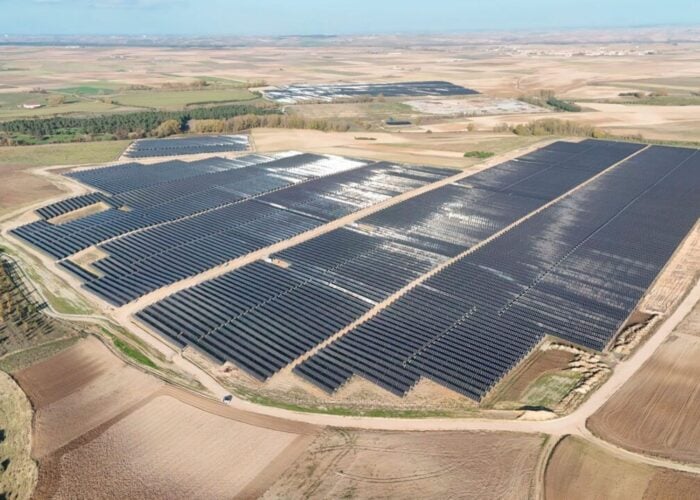Developments in balance-of-system technologies are set to play a lead role in pushing global installed PV system costs down 40% by 2020, a report by GTM Research claims.
The study highlights the growing importance of BOS innovations in driving down system costs, which it predicts will fall from US$2.16 per watt in 2014 to US$1.24 by 2020, helping the market surpass 100GW in that year.
Try Premium for just $1
- Full premium access for the first month at only $1
- Converts to an annual rate after 30 days unless cancelled
- Cancel anytime during the trial period
Premium Benefits
- Expert industry analysis and interviews
- Digital access to PV Tech Power journal
- Exclusive event discounts
Or get the full Premium subscription right away
Or continue reading this article for free
The rapid recent fall in PV costs has been largely driven by competition and technological advances in modules, but this is likely to become secondary to the contribution played by BOS innovations, GTM said.
“While declining module costs remain important, innovations in PV power electronics, structural hardware, installation processes and the integration of PV systems as a whole will be the primary push toward more economically competitive solar in the wake of waning global incentives,” said report author MJ Shiao.
According to the report, between 2007 and 2014 BOS costs fell from 39 to 64%, depending on market segment and geography.
But they still represent a significant proportion of overall system costs, a figure that has actually risen from 58% to 77% since 2007. In that time, modules as an overall proportion of system costs have fallen from 42% to 23%.
That means there is still significant scope for BOS companies to find cost savings, and the report identifies areas where those savings will be made, including the shift to 1,5000V systems, east-west-mounted installations and the growing use of single-axis trackers.
Shiao said: “In the solar market of the future, the PV industry can no longer depend on a silver bullet to reduce total system costs. Rather, vendors and installers must look toward the combination of several technologies, system design and process improvements to drive increased PV performance at decreased costs.
“While new concepts like rail-free racking or 1,500Vdc grab the most attention, mundane improvements such as reduced structural foundations or installation-labour compensation strategies are also important considerations for cost reduction.”
GTM Research expects the global PV BOS market – including all non-module hardware and soft-cost components – to be valued at US$100 billion by 2020, even taking into account the drop in costs it anticipates.
The GTM study echoes the findings of a separate piece of research published at the end of August by the Lawrence Berkeley National Laboratory in the US.
The latest in its ‘Tracking the Sun’ series reports that particularly in the last two years, the importance of non-module costs in driving down overall system costs has increased. For example, in the residential segment between 2013 and 2014, non-module costs fell by US$0.4/W, representing virtually the entire year-over-year decline in total installed prices, according the LBNL.
The report said some of these non-module cost declines can partly be attributed to innovations in BOS hardware, such as inverters and racking equipment, but are largely a result of reductions in ‘soft’ costs such as labour, design, permitting and marketing.






